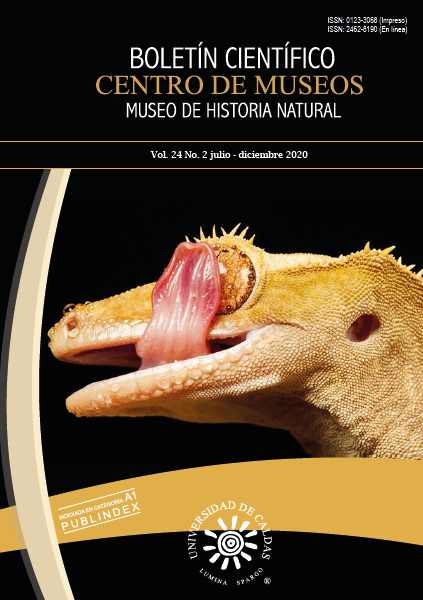Authors
Abstract
To evaluate the lethal and sublethal effect of the abamectin and dimethoate acaricides on the predator P. macropilis and its prey T. urticae. Scope: Lethal and sublethal effect of acaricides on P. macropilis and T. urticae. Methodology: The lethal and sublethal effect of the abamectin and dimethoate acaricides on the predator P. macropilis and its prey T. urticae was determined in laboratory experiments. Main results: T. urticae was 2.6-fold and 4.2-fold more tolerant than P. macropilis to abamectin and dimethoate, respectively. The instantaneous rate of increase of prey and predator decreased linearly with increasing concentrations of both acaricides. However, the instantaneous rate of increase of the predator population decreased more rapidly than that of the pest, resulting in extinction of predator populations, whereas the pest population persisted. Conclusions: Farmers may achieve better control by not spraying acaricides, but managing the populations of this predator in the field using natural enemy conservation techniques.
Keywords:
References
Adesanya, A.W., Morales, M.A., Walsh, D.B. and Lavine, L.C. (2017). Mechanisms of resistance to three mite growth inhibitors of Tetranychus urticae in hops, Bulletin of entomological research, 108(1), 23-34. Doi: https://doi.org/10.1017/S0007485317000414
Casida, J.E. and Durkin, K.A. (2013). Neuroactive insecticides: targets, selectivity, resistance, and secondary effects. Annual review of entomology, 58, 99–117.Doi: https://doi.org/10.1146/annurev-ento-120811-153645
Chowdhurya, M.A.Z., Fakhruddin, A.N.M., Islam, M.N., Moniruzzaman, M., Gan, S.H. and Alam, M.K. (2013). Detection of the residues of nineteen pesticides in fresh vegetable samples using gas chromatography mass spectrometry. Food control, 34, 457-465.
Dekeyser, M. A., McDonald, P. T., Angle Jr, G. W., and Moore, R. C. (1996). D2341-A novel agent to control spider mites. In Brighton Crop Protection Conference: pests and diseases-1996: Volume 2: Proceedings of an international conference, Brighton, UK, 18-21 november 1996 (United Kingdom).
Fadini, M.A.M., Lemos, W.P, Pallini, A., Venzon, M. and Mourao, S.A. (2004). Herbivoria de Tetranychus urticae Koch (Acari: Tetranychidae) induz defesa direta em morangueiro? Neotropical
entomology, 33(3), 293-297.
Ferrero, M., Calvo, F.J., Atuahiva, T., Tixier, M.S. and Kreiter, S. (2011). Biological control of Tetranychus evansi Baker and Pritchard and Tetranychus urticae Koch by Phytoseiulus longipes Evans in tomato greenhouses in Spain [Acari: Tetranychidae, Phytoseiidae].Biological control, 58(1),30-35.
García-Marí, F. and González-Zamora, J.E. (1999). Biological control of Tetranychus urticae (Acari: Tetranychidae) with naturally occurring predators in strawberry plantings in Valencia, Spain. Experimental and applied acarology, 23(6), 487–495.
Gerson, U. and Weintraub, P.G. (2012). Mites (Acari) as a factor in greenhouse management. Annual review of entomology, 57, 229-247.
Hassan, S.A., Bigler, F., Bogenschütz, H., Boller, E., Brun, J., Calis, J.N.M, … & Helyer, N. (1994). Results of the sixth joint pesticide testing programme of the IOBC/WPRS-working group «pesticides and beneficial organisms». Entomophaga, 39(1), 107-119|.
Kamelmanesh, M.M., Hesami, S., Namayandeh, A., Ahmadi, B. and Dorri, H.R. (2010). Evaluation of resistance mechanism of some navy bean genotypes to two-spotted spider mite (Tetranychus urticae). Plant protection journal ,2(2), 111-125.
Kazak, C. (2008). The development, predation and reproduction of Phytoseiulus persimilis Athias-Henriot (Acari: Phytoseiidae) from Hatay fed Tetranychus cinnabarinus Boisduval (Acari: Tetranychidae) larvae and protonymphs at different temperatures. Turkish journal of zoology, 32(4), 407–414.
Kim, S.S. and Yoo, S.S. (2002). Comparative toxicity of some acaricides to the predatory mite, Phytoseiulus persimilis and the twospotted spider mite, Tetranychus urticae. BioControl,47(5): 563–573.
Krishna, R.A. and Bhaskar, H. (2016). Evaluation of selected acaro pathogenic fungi, botanicals and new acaricide molecules against Tetranychus urticae Koch (Prostigmata: Tetranychidae) on okra. Journal of tropical agriculture, 54(1), 1-21.
Mahmoud, S.S. and Croteau, R.B. (2002). Strategies for transgenic manipulation of monoterpene biosynthesis in plants. Trends in plant science, 7(8),366–373
McEwen, P. and Haskell, P.T. (Eds.). (2013). Ecotoxicology: pesticides and beneficial organisms. Dordrecht, Holanda: New Springer.
Mostafalou, S. and Abdollahi, M. (2012). Concerns of environmental persistence of pesticides and human chronic diseases. Clin. Exp. Pharmacol, 5, e002.
Oliveira, H., Janssen, A., Pallini, A., Venzon, M., Fadini, M. and Duarte, V. (2007). A phytoseiid predator from the tropics as potential biological control agent for the spider mite Tetranychus urticae Koch (Acari: Tetranychidae). Biological Control, 42(2), 105-109. Doi: https://doi.org/10.1016/j.biocontrol.2007.04.011
Rosario-Cruz, R., Almazán, C., Miller, R.J, Domínguez-García, D.I., Hernández-Ortiz, R. and de la Fuente, J. (2009). Genetic basis and impact of tick acaricide resistance. Frontiers in bioscience,14(7), 2657-2665.
SAS Institute Inc. (2004). The Princomp procedure. In SAS Institute Inc SAS/STAT(®). SAS Press,14 (1), 7435-7478.
Sato, M.E., da Silva, M.Z., da Silva, R.B., de Souza Filho, M.F. and Raga, A. (2009). Monitoramento da resistência de Tetranychus urticae Koch (Acari: Tetranychidae) a abamectin e fenpyroximate em diversas culturas no Estado de São Paulo. Arquivos do instituto biológico 76(2): 217–223.
Simmonds, S.P. (1971). Observations on the possible control of Tetranychus urticae on strawberries by Phytoseiulus persimilis. Plant Pathology, 20(3), 117-119. Doi: ttps://doi.org/10.1111/j.1365-3059.1971.tb00526.xStumpf, N. and Nauen, R. (2001). Cross-resistance, inheritance and biochemistry of mitochondrial electron transport inhibitor-acaricide resistance in Tetranychus urticae (Acari: Tetranychidae). Journal of Economic Entomology, 94(6), 1577-1583. Doi: 10.1603/0022-0493-94.6.1577
Van Leeuwen, T., Vontas, J., Tsagkarakou, A., Dermauw, W. and Tirry, L. (2010). Acaricide resistance mechanisms in the two-spotted spider mite Tetranychus urticae and other important Acari: a review. Insect biochemistry and molecular Biology, 40(8), 563–572. Doi: https://doi.org/10.1016/j.ibmb.2010.05.008
Waite, G.K. (1988). Integrated control of Tetranychus urticae in strawberry in south-east Queensland. Experimental and Applied Acarology,5, 23-32. Doi: https://doi.org/10.1007/BF02053814

 pdf (Español (España))
pdf (Español (España))
 FLIP
FLIP
 Perfil Google Scholar
Perfil Google Scholar



















